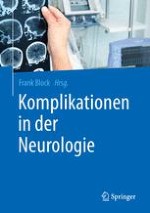2016 | Direkte orale Antikoagulanzien | OriginalPaper | Buchkapitel
5. Intrazerebrale Blutung unter oraler Antikoagulation wegen Vorhofflimmern
verfasst von : F. Block
Erschienen in: Komplikationen in der Neurologie
Verlag: Springer Berlin Heidelberg











